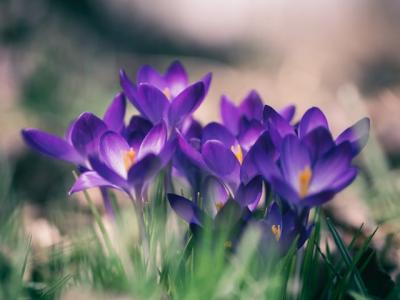7 tips to get your garden ready for spring
1. Inspect Raised Garden Beds
Check garden beds for any damage. Over the winter, soggy soil from rain and snow can put a strain on the wood frames of a raised garden bed. You want to make sure all your beds are structurally sound and ready to house plants and soil. To do so, repair any bowed or split wood on the frames.
2. Check Your Garden Tools
Like you, your garden tools have patiently been waiting for the next gardening season. Get your garden tools in tip-top shape before the planting season gets in full swing. Give them a good wipe down and inspect for rust on the tool heads. If rusty, soak the tool in 50% water and 50% vinegar. Then, give them a good scrub with steel wool. If your tools have wooden handles and are showing signs of splits and cracks, rub them down with boiled linseed oil.
3. Turn Your Compost
While your plants have been hibernating, your compost has been brewing. It's time to turn your compost pile and check for any that is ready to use. Making your own compost is one of the best natural soil amendments and it's free!
Add compost to improve the soil by scratching in finished compost into the top one inch of soil. This will give your soil plenty of nutrients to house new seedlings.
4. Top Dress Garden Beds
If you run short of home-grown compost, you can still give your soil a nutrient boost. Use well-seasoned manure to top-dress your garden beds in preparation for planting. If you planted a winter cover crop, now is the time to till it into the soil in preparation for planting the beds.
5. Divide Perennials
If you’re like me, you have spent the winter dreaming up a new garden plan or map. Spring is a great time to transplant divisions or move plants around. If you don't have room for your new divisions or want something new, share or trade some of your plants with neighbors and gardener friends.
This is a cost-efficient way to add more plants to your landscape, but be mindful of sharing pests, disease, and weeds. Only share plants from your garden that are healthy and inspect plants from friends or plant sales thoroughly. If there are any signs of distress or discoloration, do not plant it in your garden. The risk often far outweighs the reward!
6. Weed and Mulch
Eradicate those pesky early spring weeds before they get too comfortable in your garden. The key to successful weeding is to start early in order to stay on top of it. Remove any young, sprouting weeds first.
Next, put down a layer of cardboard or landscape fabric onto the bare ground before you add mulch. A three to four-inch layer of mulch is sufficient to discourage any new weed growth. Alternatively, you can plant your garden tightly with perennials, annuals, trees, and shrubs to crowd out weeds. More plants the better, right!
7. Seed Starting
Seed starting may be one of the most exciting spring garden tasks. Seeing new sprouts germinate and rise from the soil definitely brings me a little dopamine hit. Not all seeds will begin at the same time, so be sure to check their packet for growing timelines.
I like to sow warm-weather vegetables and annuals indoors before the last frost date. To aid in germination, pre-soak larger seeds and seeds with thick coats such as beets and nasturtium the night before you sow them in starter pots.
Seed starting is a gardening art form and there is a lot to cover on this topic. For more on how to start seeds both indoors and out, check out The Ultimate Seed Starting Guide.

